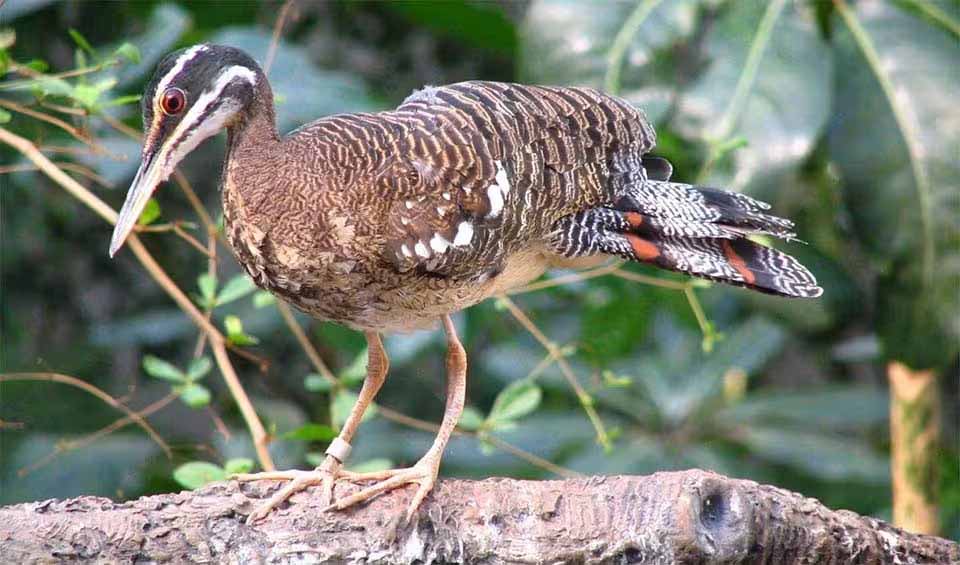Eurypygidae – Sunbittern
Cryptic birds with 'eyes' on their wings
One of the avian world’s unique and lesser-known groups, with its sole representative being the Sunbittern. The Sunbittern (Eurypyga helias) is a bird of neotropical forests, ranging from Mexico through Central America down to Brazil, inhabiting riverine forests and wooded wetlands, where its presence is often betrayed only by its distinctive calls or the flash of its spectacular wing pattern.
Measuring approximately 45 centimeters (18 inches) in length, the Sunbittern is a medium-sized bird adorned with cryptic plumage that serves as effective camouflage within its dappled, light-flecked environment. This bird’s plumage is an intricate tapestry of browns, blacks, and whites, enabling it to blend seamlessly into the leaf litter of the forest floor or the shady banks of the streams it frequents.
One of the Sunbittern’s most striking features is its wings, which bear large, brilliantly patterned “eyespots.” These dramatic wing markings are often kept hidden but can be suddenly and dramatically displayed when the bird feels threatened or during courtship rituals. When these wings are opened, the eyespots can startle predators, giving the Sunbittern a chance to escape. During the breeding season, the male Sunbittern will perform a courtship dance, where he opens his wings to display the eyespots to their full, mesmerizing effect, thus attracting a mate.
The Sunbittern’s long, straight beak and medium-length legs are perfectly adapted to its hunting method. It is a patient hunter, often standing still in shallow waters, waiting to strike quickly with its sharp beak to catch unsuspecting prey. The Sunbittern’s diet includes amphibians, fish, crustaceans such as crabs, and various insects.
As with many species that depend on specific habitats, the Sunbittern faces challenges due to environmental changes. Deforestation and the degradation of waterways pose a threat to its survival. Conservation of wetland habitats is crucial for maintaining healthy populations of this unique species.
Genera in this family
Cryptic birds with ‘eyes’ on their wings

